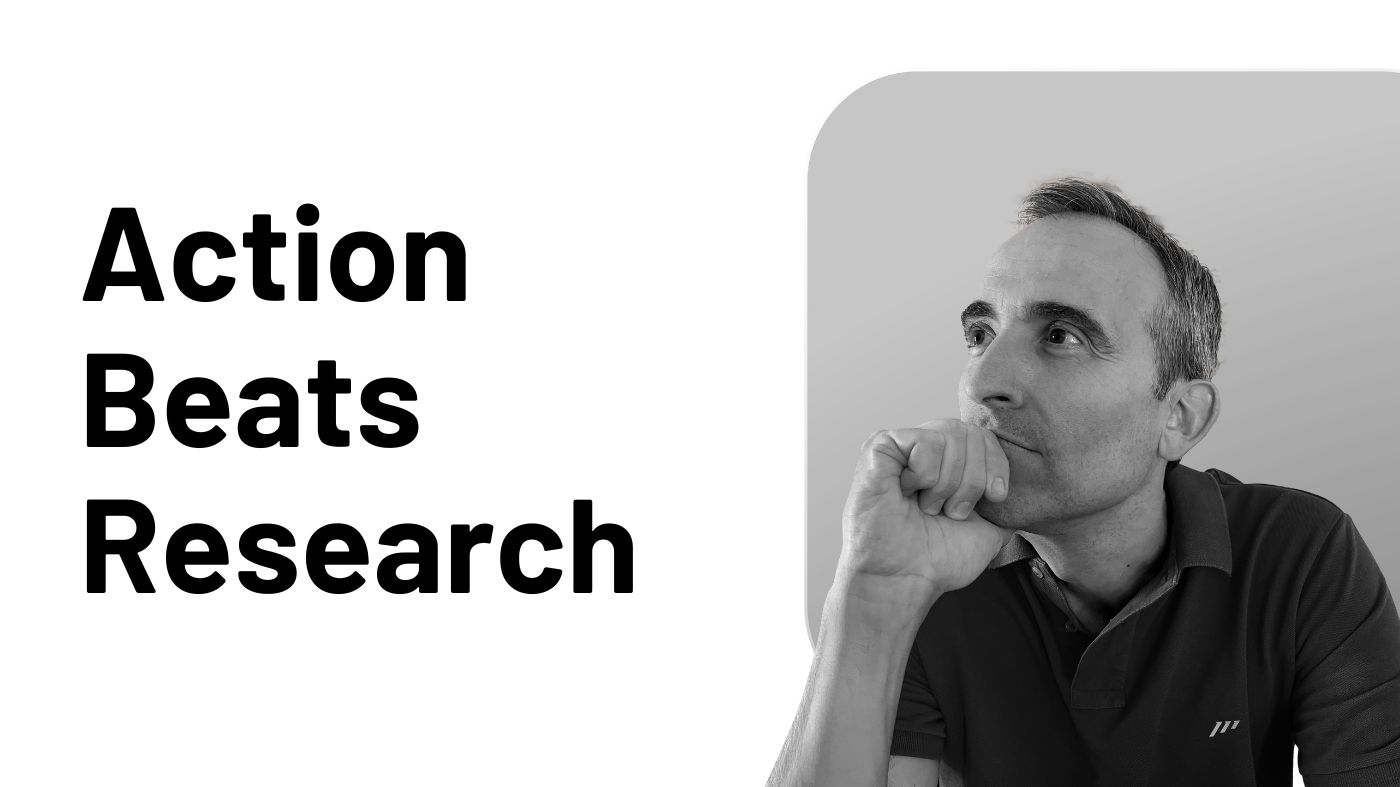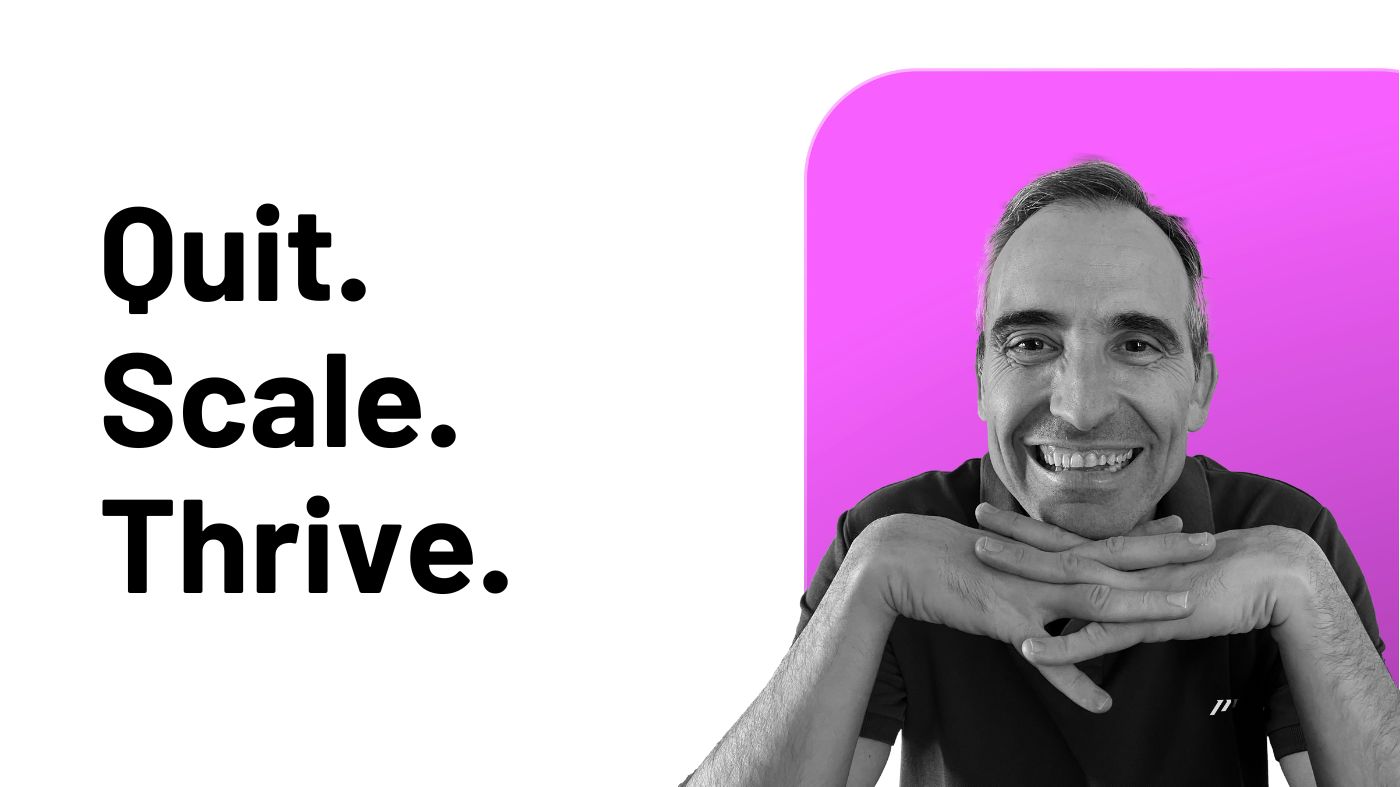Create a productivity system that fuels focus, creativity, and success.
Without structure, productivity dies.
Chaos is the enemy of focus.
Structure is your weapon.
You open your laptop, ready to tackle the day’s priorities. But before you can even start, the interruptions begin. Your phone buzzes with urgent messages. Emails flood in faster than you can skim the subject lines. A colleague pops by with a “quick question” (yes, “only five minutes”) that derails your train of thought.
Then it’s back-to-back meetings, each dragging on longer than planned.
By lunchtime, your to-do list has only grown, and the tasks you meant to finish are buried under a pile of “ASAP” requests.
Sound familiar?
This isn’t just a bad day; it’s your every day. A constant whirlwind of chaos, leaving you exhausted but with little to show for it.
Stop Pointing Fingers: The Real Productivity Problem Starts With You
It’s easy to blame the chaos around us—urgent emails, endless interruptions, unexpected crises—for our lack of progress.
But here’s the truth: while the world is chaotic, it’s not an excuse to let chaos dictate how you work.
The real problem lies within: a lack of structure.
Without it, your day becomes a nightmare of stress, anxiety, and frustration that drains your performance and your well-being.
Imagine starting your day with no plan, no structure—just hoping to figure it out as you go. Before you even decide what to tackle first, the interruptions begin. The day spirals into reaction mode, and by the time it’s over, you’ve been busy—but not productive.
Let me assure you, it’s possible to be “busy” the right way—the way we define it at the Paperless Movement®: staying active, but with every effort driving meaningful results, impactful outcomes, and tangible deliverables.
“Don’t let the noise of others’ opinions drown out your own inner voice.” – Steve Jobs
Picture something different.
Instead of reacting to the storm, you have a structure in place—a productivity system designed to handle the chaos while keeping you in control.
You move from improvisation to intention. From chaos to clarity. From underperforming to consistently performing at your best.
Day by day, this structure becomes your anchor, turning short-term struggles into long-term success. It’s not about perfection; it’s about progress, fueled by a productivity system that works for you, not against you.
This shift isn’t just about getting more done—it’s about building the foundation for a life where you can perform at your peak without sacrificing your peace of mind.
And it’s a transformation that starts right now.
Structure Isn’t a Cage: It’s a Catalyst for Freedom and Creativity
Some may argue that building structure means sacrificing freedom or stifling creativity.
Others might believe it leads to a dull, overly preplanned life.
But I strongly disagree: it’s actually the opposite.
The more structure you create, the more freedom you gain.
Why?
Because structure allows you to be fully present.
When you’re focused on the moment, distractions fade away, and you can channel your energy into what truly matters.
-
In that crucial strategic meeting, you’re 100% engaged, driving decisions that elevate your business.
-
While crafting that client email, you’re precise, resolving issues effectively.
-
And, when it’s time to tackle your budget in Google Sheets, your accuracy shines because your attention is undivided.
Now take this approach into your personal life for an even greater impact.
-
Structure lets you be completely present with your partner, genuinely listening and connecting.
-
It allows you to fully enjoy moments of laughter with friends or playtime with your kids.
-
And, when you finally sit down to read that book you’ve always wanted, you’re immersed, savoring every page.
Allow me to share some striking examples to illustrate and support this approach.
Contrary to the belief that structure stifles creativity, many renowned artists have demonstrated that disciplined routines can significantly enhance creative output.
Take Pablo Picasso, for instance.
Despite his reputation for spontaneity, Picasso maintained a highly structured daily schedule that fueled his prolific artistry.
-
Picasso would begin his day around 11 a.m., dedicating his mornings to relaxation and socializing.
-
His first work session commenced at 2 p.m., lasting eight hours until 10 p.m.
-
After a dinner break, he resumed painting from 11 p.m. into the early hours of the morning.
This regimented routine allowed him to immerse himself deeply in his work, resulting in the creation of over 50,000 pieces of art throughout his lifetime.
“Inspiration exists, but it has to find you working.” – Pablo Picasso
Similarly, other creative minds have embraced structured habits to enhance their productivity.
For example, Salvador Dalí (sorry, but I’m Spanish…) started his day by affirming his identity and contemplating his creative potential, setting a purposeful tone for his artistic endeavors.
These examples illustrate that structure doesn’t hinder creativity; rather, it provides a framework that enables sustained focus and innovation.
By establishing consistent routines, you can create an environment where creativity thrives, allowing you to be fully present and engaged in both your professional and personal pursuits.
Structure doesn’t confine you—it empowers you, with a productivity system running seamlessly in the background, freeing you to live, work, and connect at your best.
Escape the Energy Drain: How Structure Saves You from Decision Fatigue
When you operate without structure, you’re trapped in a cycle of constant improvisation. And make no mistake—improvisation is an energy vampire.
-
Every decision about what to do next drains your mental resources.
-
Your brain is stuck in overdrive, debating priorities, juggling options, and figuring out next steps.
-
This energy, instead of fueling meaningful action, is wasted on decision-making.
-
By the time you actually start working, you’re already running on empty.
Now, compare that to working within a structured (but flexible) productivity system.
Structure is your fortress, your house of bricks in a world of chaos. It doesn’t stifle you—it protects you.
-
With structure, you’ve already mapped out what needs to be done, when, and for how long.
-
You’re free to focus solely on execution because the plan is already in place.
-
And when life inevitably throws something unexpected your way, structure makes it simple: you assess, adjust, and seamlessly integrate it into your solid framework.
-
It’s far easier to accommodate surprises within a plan than to constantly figure out what to do next.
Structure isn’t a restriction—it’s a strategy. It conserves your energy for what truly matters, ensuring every ounce of effort goes toward productive outcomes instead of chaotic guesswork.
From Theory to Action: 5 Steps to Build a Productivity System That Works
I know this all sounds great in theory, but you’re probably wondering: how do I put this into practice?
Let’s break it down into clear, actionable steps.
Step 1: Split Your Work Between Shallow and Deep Work
The foundation of a productive day lies in recognizing the difference between Deep Work and Shallow Work—and scheduling them accordingly.
Deep Work: Your Zone of Genius
Deep Work involves tasks that require intense focus and high cognitive effort, like strategic planning, creative problem-solving, or writing.
These are the activities that drive meaningful progress and deliver significant results. While mentally taxing, they’re also immensely rewarding when given priority.
Here’s how to integrate Deep Work into your day:
-
Identify Your Peak Energy Windows: Most people have a 2–4 hour window when they’re most mentally alert (often in the morning). Use this time for your highest-impact tasks.
-
Schedule Uninterrupted Time Blocks: Dedicate at least 90 minutes to Deep Work sessions. Protect this time fiercely—turn off notifications, close your door, and communicate that you’re unavailable.
-
Align Deep Work With Goals: Use a structured (but flexible) methodology like ICOR® to ensure your Deep Work focuses on long-term goals.
Shallow Work: The Necessary Maintenance
Shallow Work includes repetitive or lower-effort tasks like responding to emails, attending routine meetings, or handling admin work. While these tasks don’t move the needle much, they’re still necessary to keep your business running.
Here’s how to manage Shallow Work:
-
Reserve Low-Energy Periods: Schedule Shallow Work for afternoons or other times when your energy is naturally lower.
-
Batch Similar Tasks: Group tasks like email management, invoicing, or inbox reviews into blocks to minimize task-switching and maximize efficiency. Let’s dive a bit deeper on this.
Step 2: Batch Your Shallow Work
Find patterns in your Shallow Work tasks. For example:
-
Managing your email.
-
Handling administrative duties like invoicing or accounting.
-
Reviewing inboxes in your Task or Project Management system.
Group these similar tasks together and set specific times to complete them in bulk. This minimizes mental load and streamlines your workflow.
Step 3: Build Routines to Execute Shallow Work
Anchor your day with consistent daily routines.
Avoid misunderstanding the traditional idea of routines.
In ICOR®, a daily routine is a bucket that contains a structured sequence of (shallow) tasks you perform regularly at specific times each day.
It serves as a crucial foundation for your productivity system, helping you transition from reacting mode to proactively managing your day.
They turn repetitive actions into automatic processes, freeing up mental energy for what matters most.
By following these prearranged tasks on autopilot, you also ensure nothing is overlooked (peace of mind).
Daily routines typically include morning, afternoon, and end-of-day tasks such as planning, checking inboxes, delegating tasks, and reflecting on your day.
They provide a sense of control and consistency, crucial for maintaining productivity and achieving long-term goals.
Step 4: Leave Space for the Unexpected
As a busy professional, unexpected events are inevitable.
Build flexibility into your schedule by leaving blank spaces.
This buffer allows you to handle surprises without derailing your entire day.
Step 5: Create a Schedule Based on This Structure
-
Start With Non-Negotiables: Add meetings and time-sensitive tasks to your schedule first.
-
Include Your Routines: Determine when to handle your Shallow Work and stick to the plan.
-
Plan Your Deep Work: Block out your peak energy periods for focused, high-impact tasks.
-
Adjust as Needed: Be prepared to adapt, but always work within your structure.
By following these steps, you’ll transform your approach from reactive improvisation to intentional, structured productivity.
This isn’t about creating a rigid day—it’s about crafting a productivity system that empowers you to thrive while conserving energy for what truly matters.
My Daily Structure: The Proven System I Live By
Let me give you a glimpse into my daily structure—a productivity system that keeps me productive, focused, and aligned with my goals.
Warm-Up Routine
I start my day by connecting with what matters most.
-
Messages to Loved Ones: Sending a quick note to those closest to me fosters connection and sets a positive tone for the day.
-
Journaling: I reflect and plan by defining my Highlight of the Day—the one task (one of my Weekly Goals) that I commit to completing no matter what. I also note additional tasks (just two) I aim to accomplish.
Morning Routine
The morning is my first round of Shallow Work—a quick check-in to ensure everything is moving smoothly.
-
Inbox Review: I go through my inboxes (Project Management system, Team Communication system, and email) to identify anything that’s waiting for my input (I don’t want people waiting for my reply).
-
Delegation: If I find tasks that can run in parallel while I’m in Deep Work, I delegate them immediately. This routine ensures my businesses keeps moving even when I’m fully immersed in my focused work.
Deep Work
Every day, I carve out at least two hours for focused, high-impact work.
During this time, I tackle tasks that drive progress on the big quarterly goals we’ve set. These sessions are non-negotiable—they’re my time to push forward on what truly matters.
Afternoon Routine
Afternoons are dedicated to pure Shallow Work, cleaning up and tackling smaller, essential tasks.
-
Shallow Work: I clear all my inboxes to reach inbox zero every single day.
-
Speedies: I focus on quick tasks (under 15 minutes) that are small but necessary to keep the wheels turning.
End-of-Day Routine
I wind down with activities that help me reflect and prepare for the next day.
-
Reading: I spend time (if possible… not easy…) reading articles or materials that inspire or inform me.
-
Evening Journaling: I review the day, jot down conclusions, and allow myself to relax.
-
Planning for Tomorrow: I map out the next day so I’m ready to dive into my Highlight of the Day first thing.
This structure keeps me grounded, ensuring I stay productive without sacrificing balance. It’s not about perfection but about having a system that supports consistent progress.
Key Takeaways: Why Structure is the Foundation of Lasting Success
“Success is nothing more than a few simple disciplines, practiced every day.” – Jim Rohn
-
Structure is the antidote to chaos: Without structure, productivity suffers, leaving you reactive and drained. Structure provides clarity, focus, and control, enabling you to achieve meaningful results.
-
Improvisation wastes energy: Constantly figuring out what to do next depletes your mental resources. Structure eliminates this guesswork, allowing you to conserve energy for high-value tasks.
-
Structure fosters freedom and creativity: Far from stifling creativity, structure gives you the freedom to be fully present in your work and personal life, enhancing your focus and engagement.
-
A balanced approach is key: Split your day between Deep Work (focused, high-impact tasks) and Shallow Work (routine, maintenance tasks), scheduling them during your peak and low-energy periods respectively.
-
Routines reduce decision fatigue: Daily routines create consistency, turning repetitive tasks into automatic processes that free up mental bandwidth for strategic thinking and meaningful action.
-
Flexibility matters: Incorporate blank spaces into your schedule to handle unexpected events without disrupting your flow.
-
Practicality wins: Implementing a structured productivity system doesn’t require perfection—it requires consistency. Start small, adapt, and refine as you go.
By creating and sticking to a structure that works for you, you’ll unlock a way to live, work, and thrive at your best—every single day.




